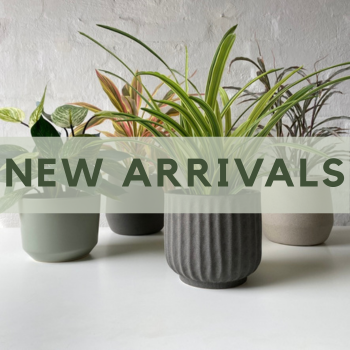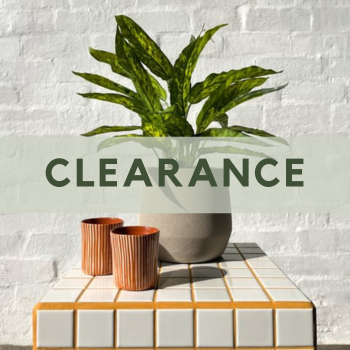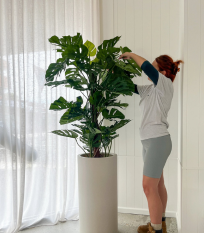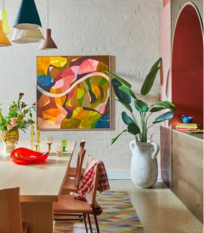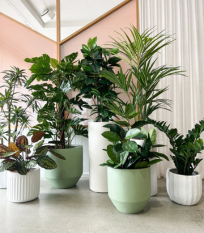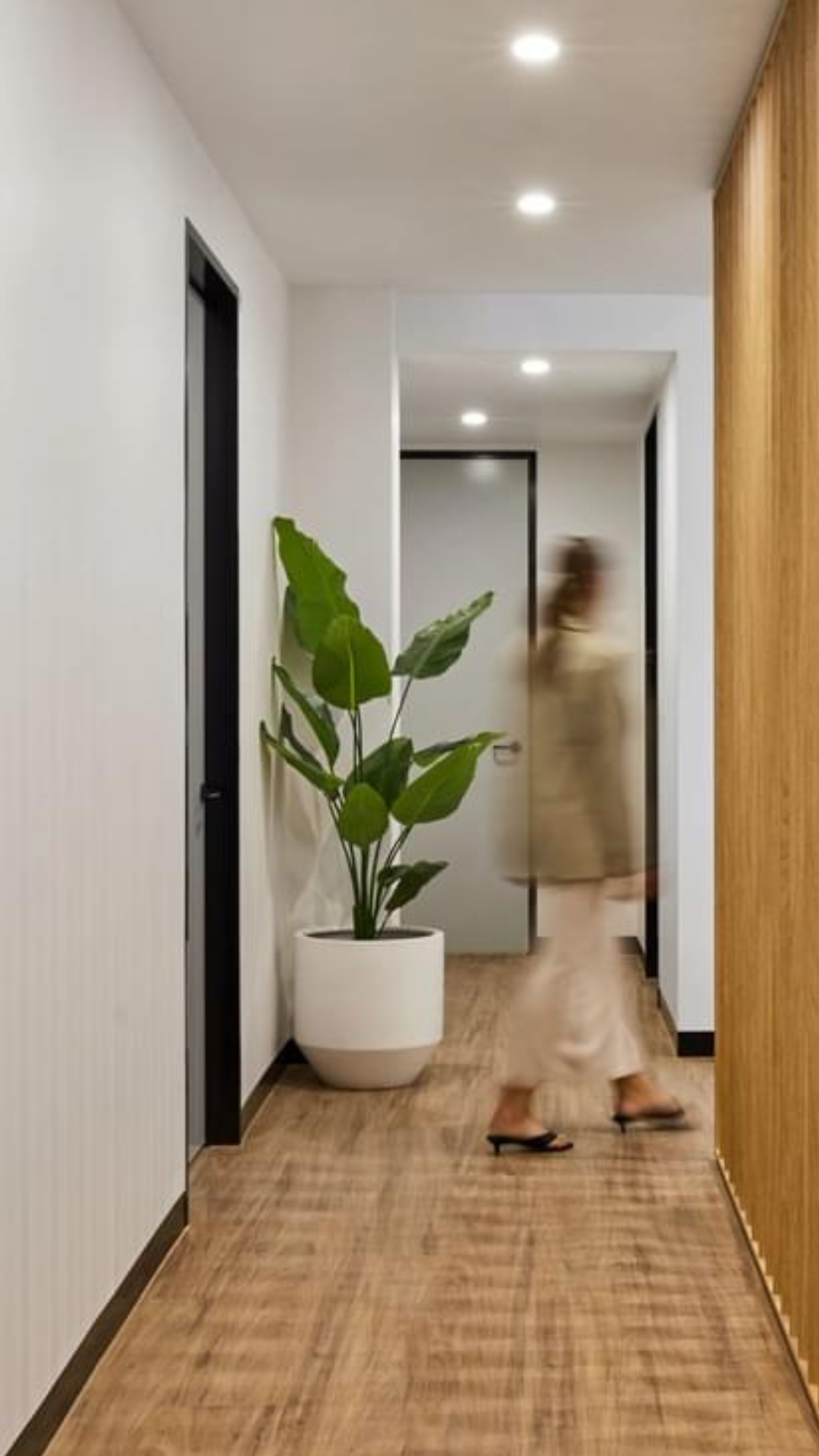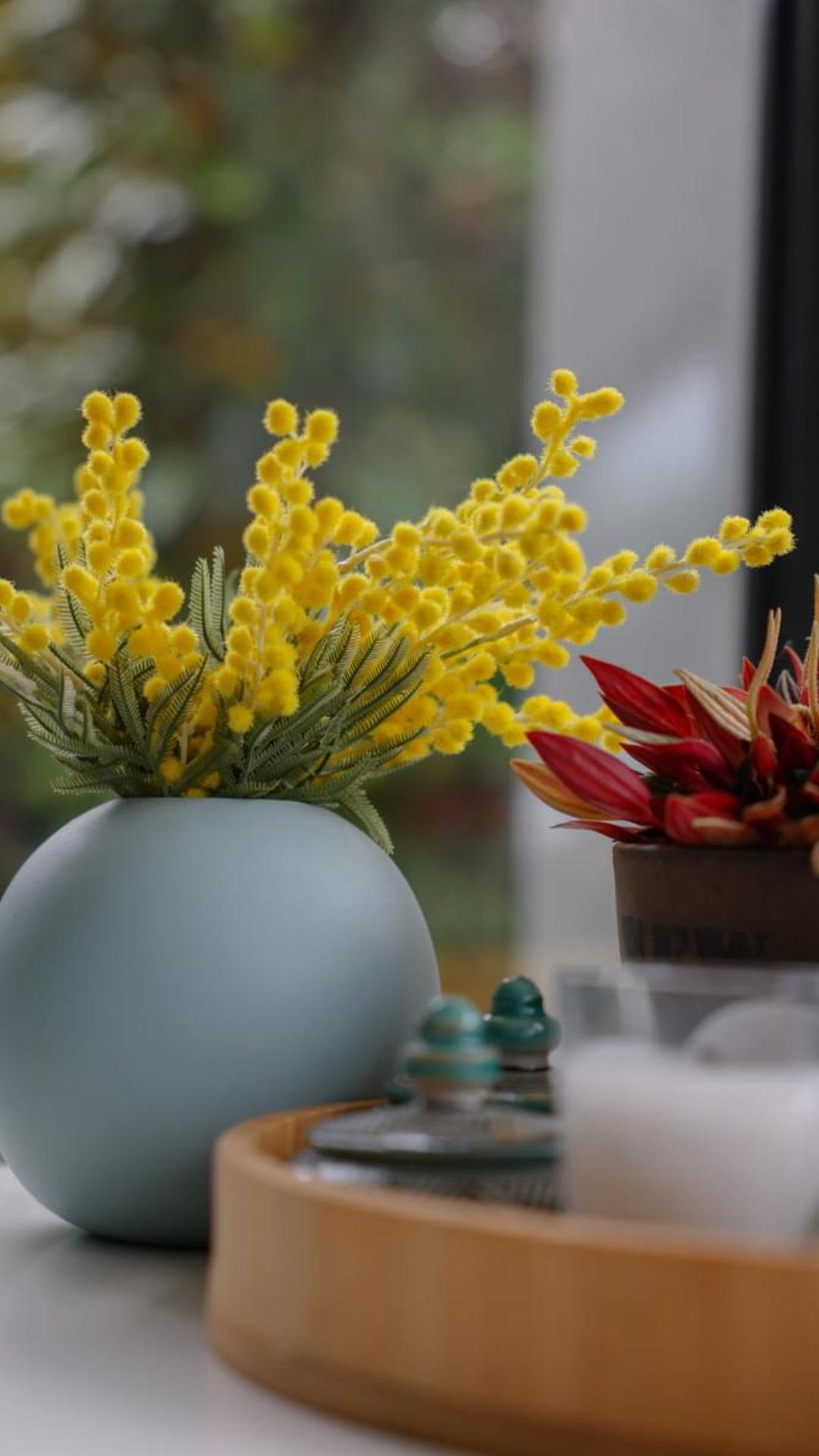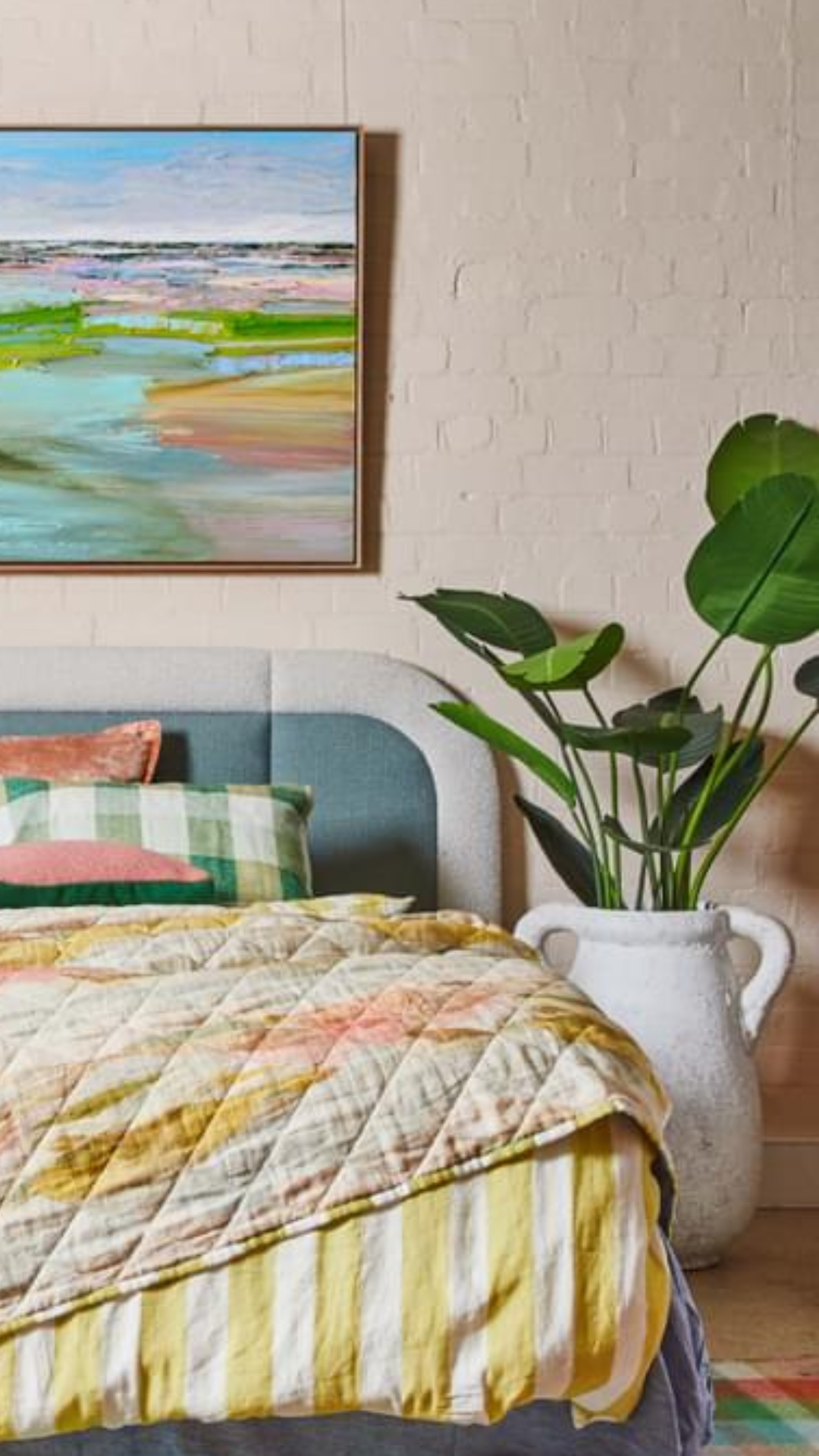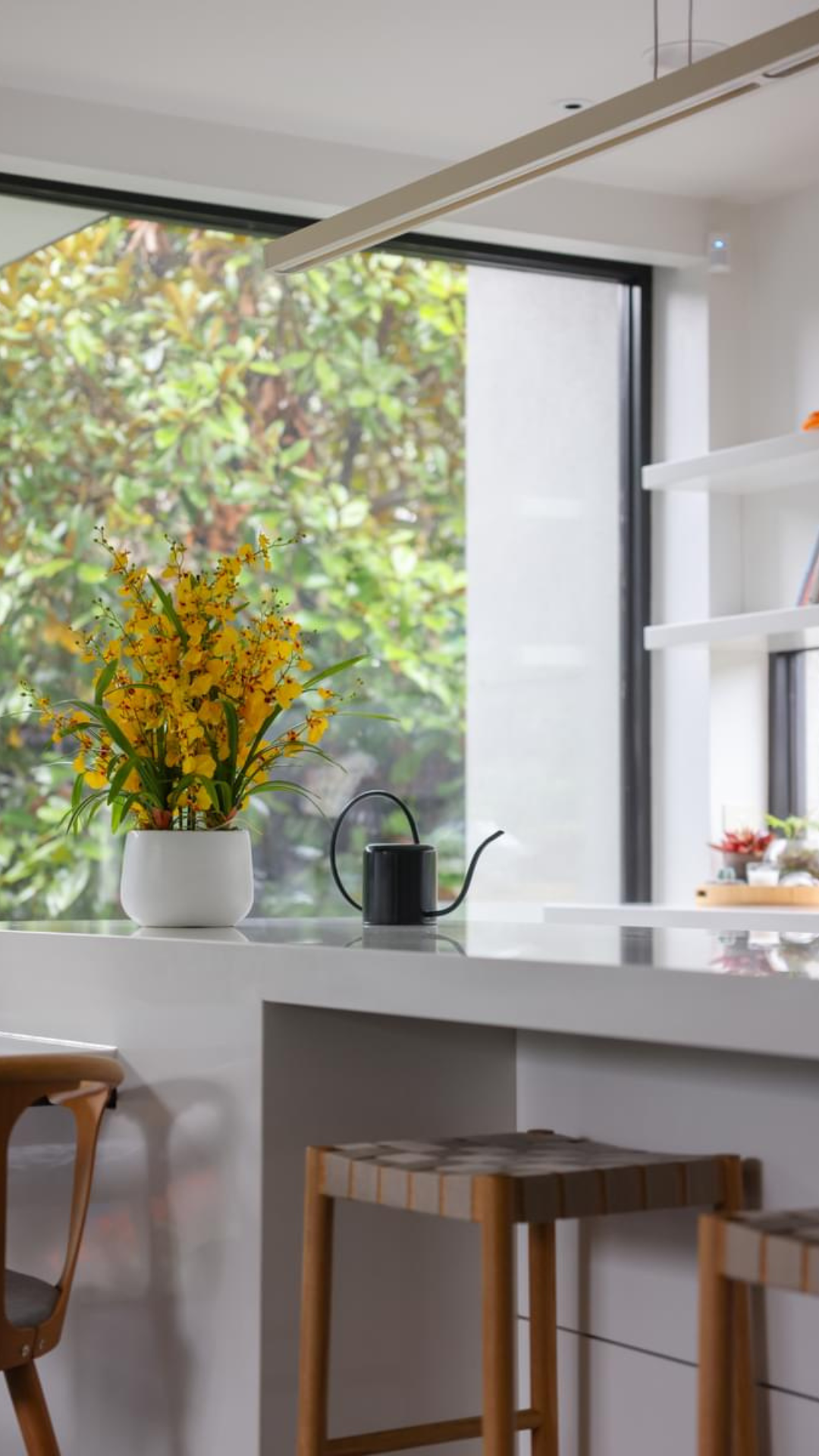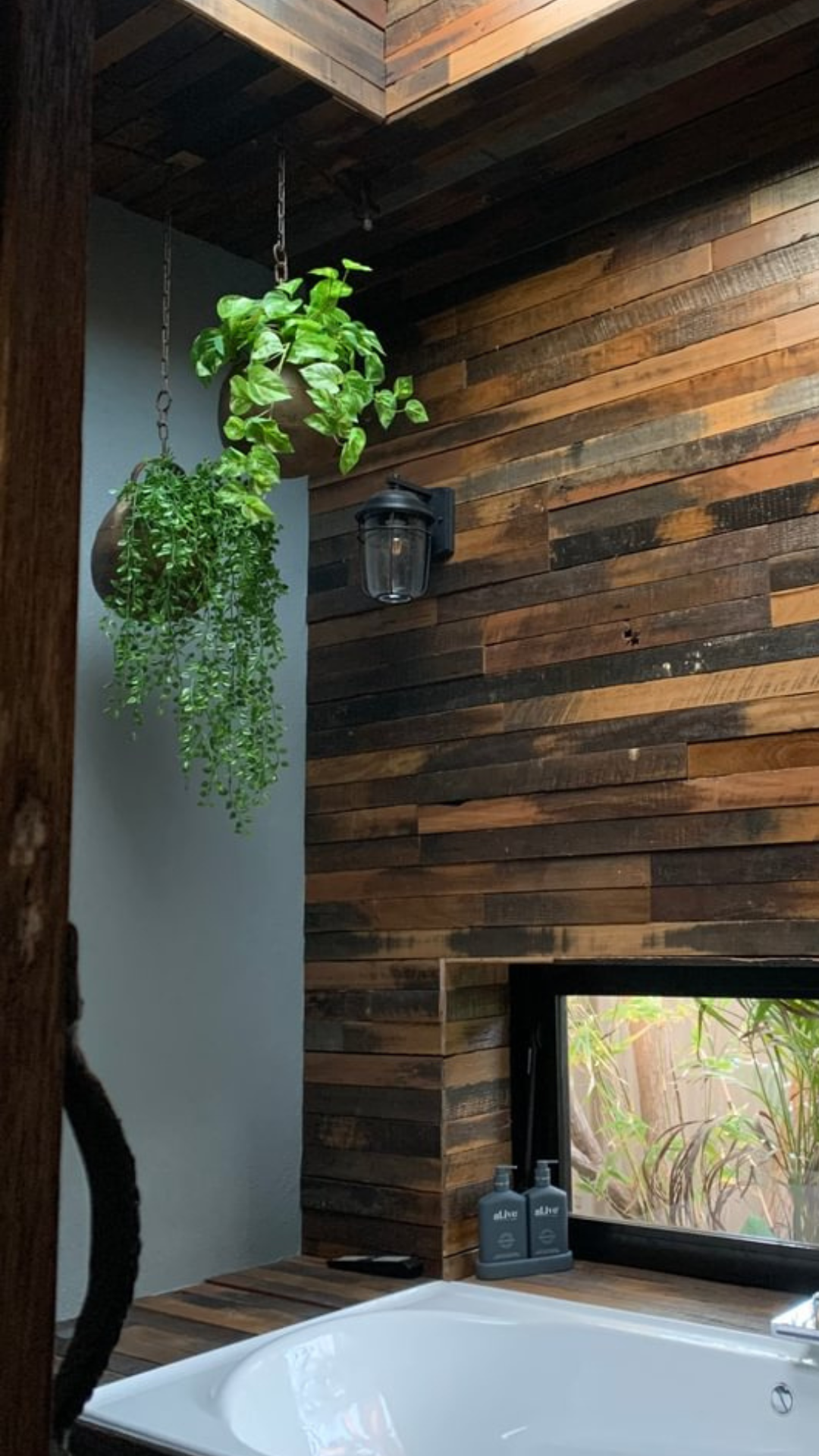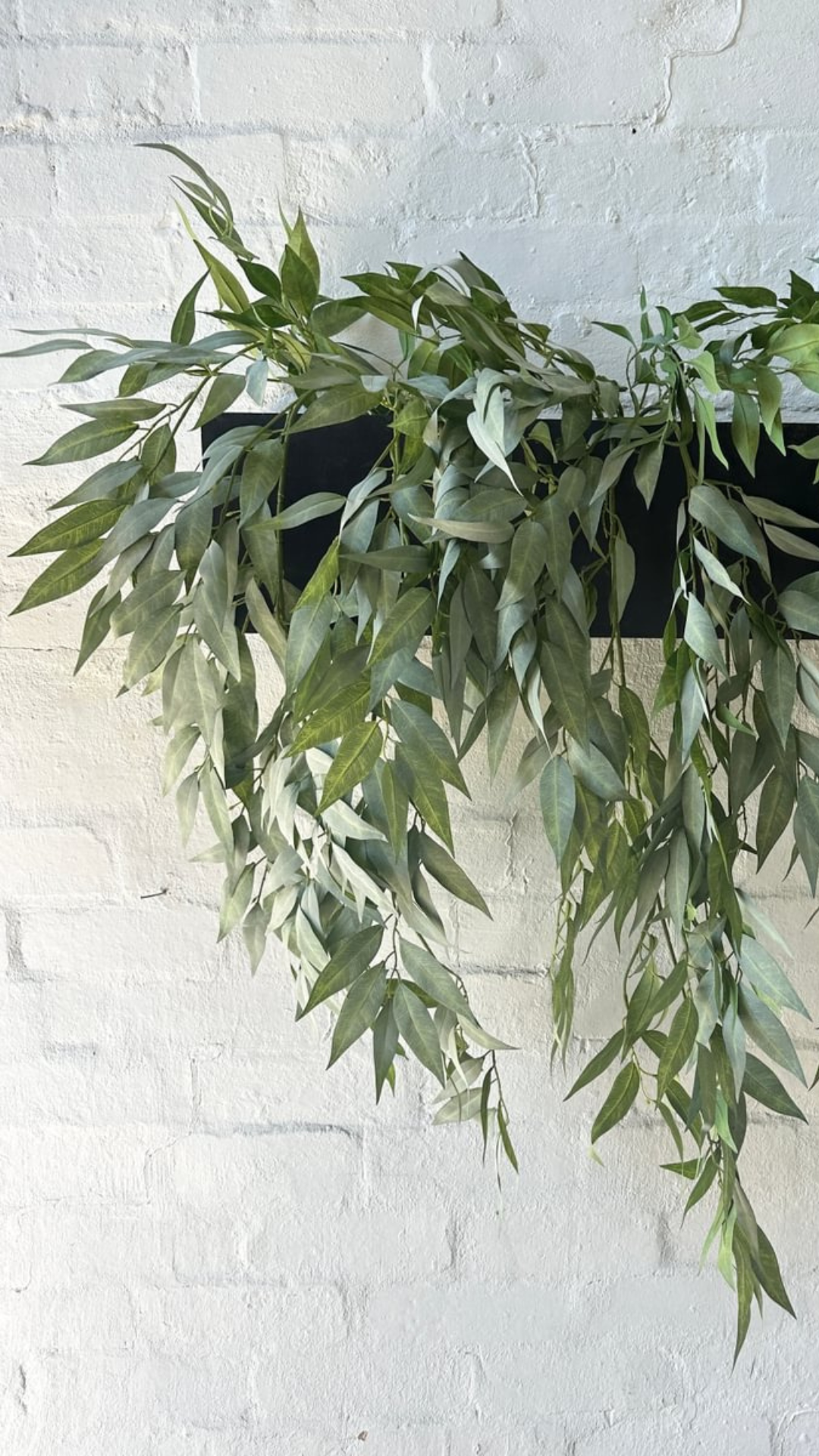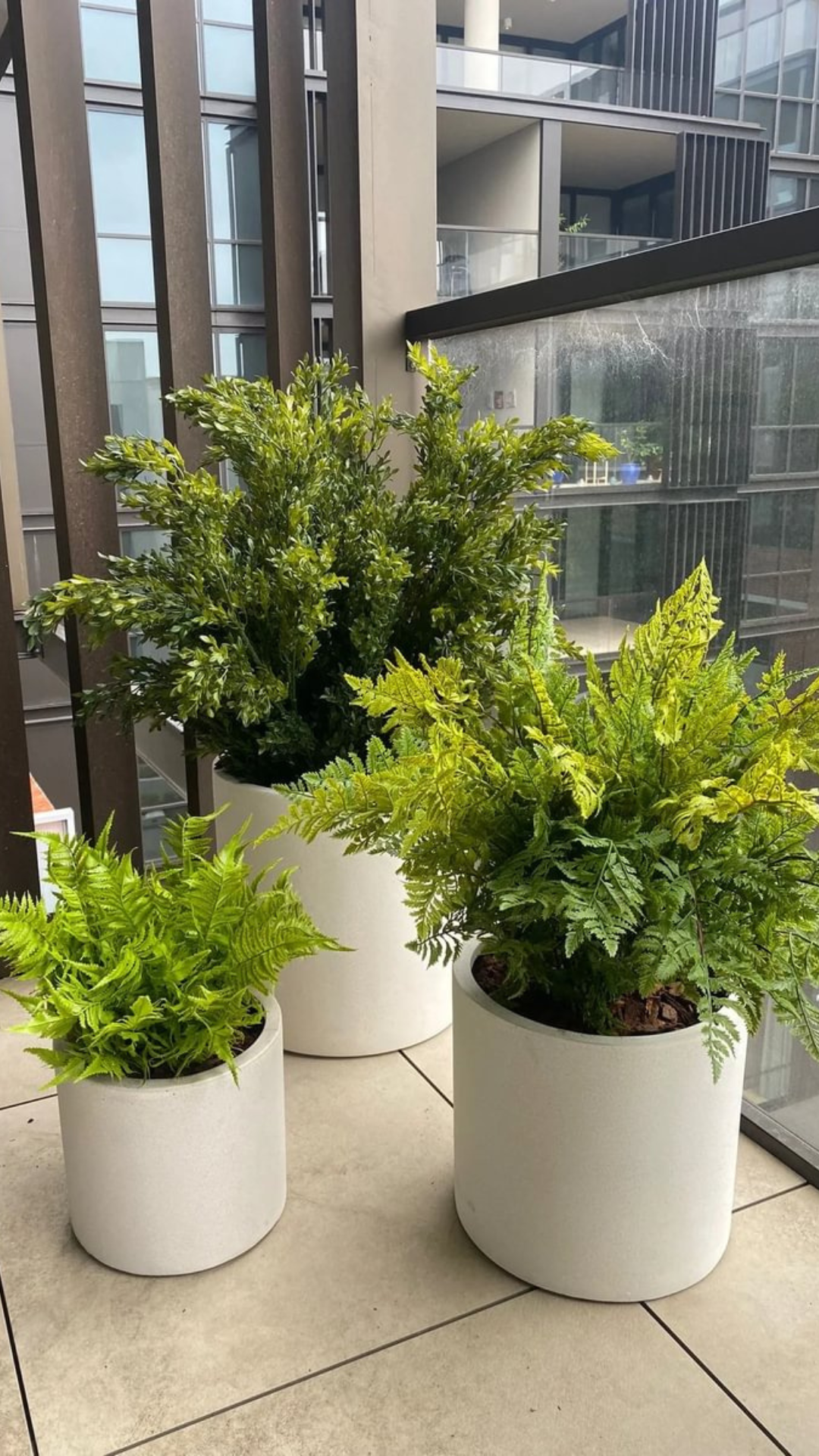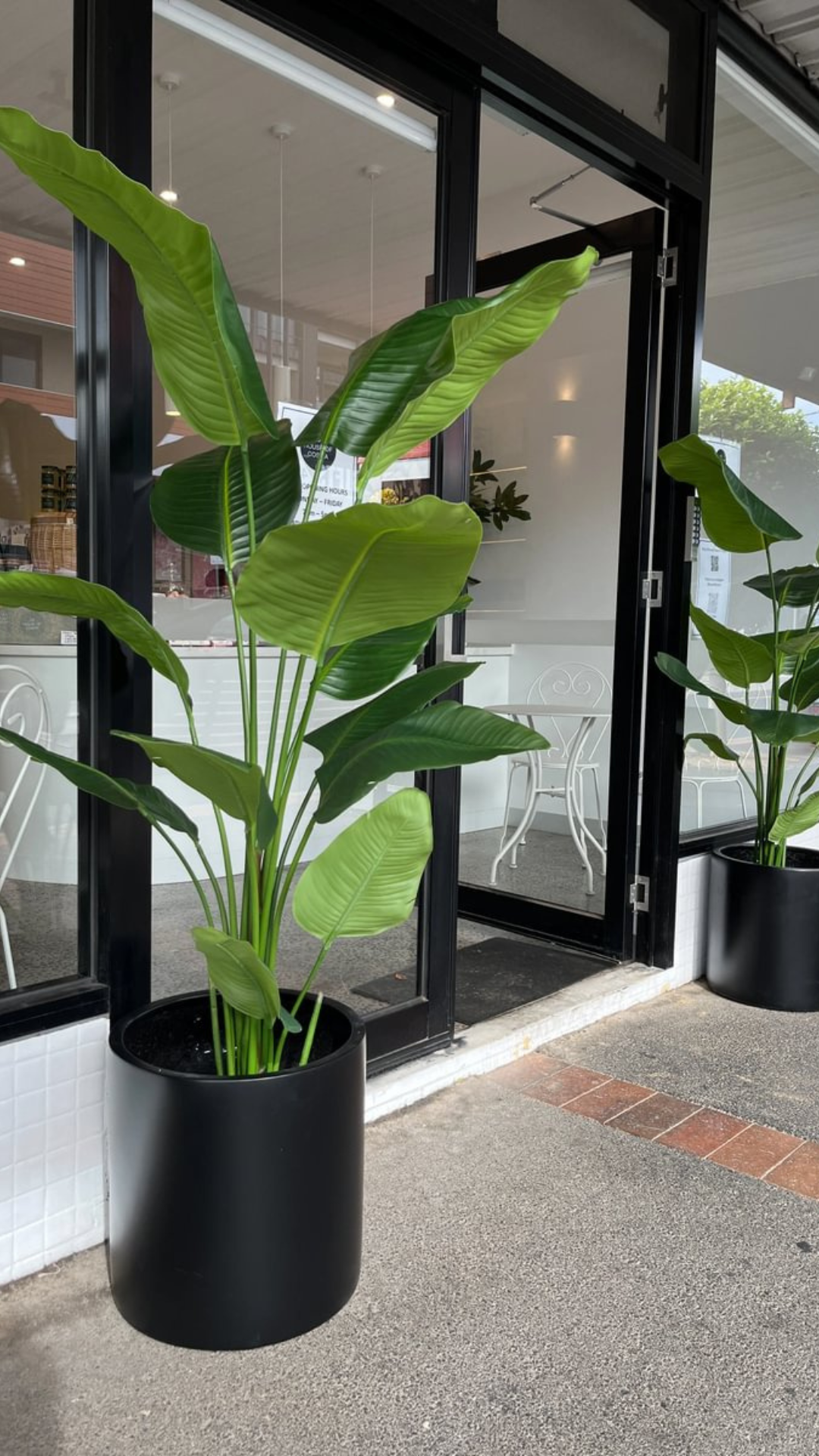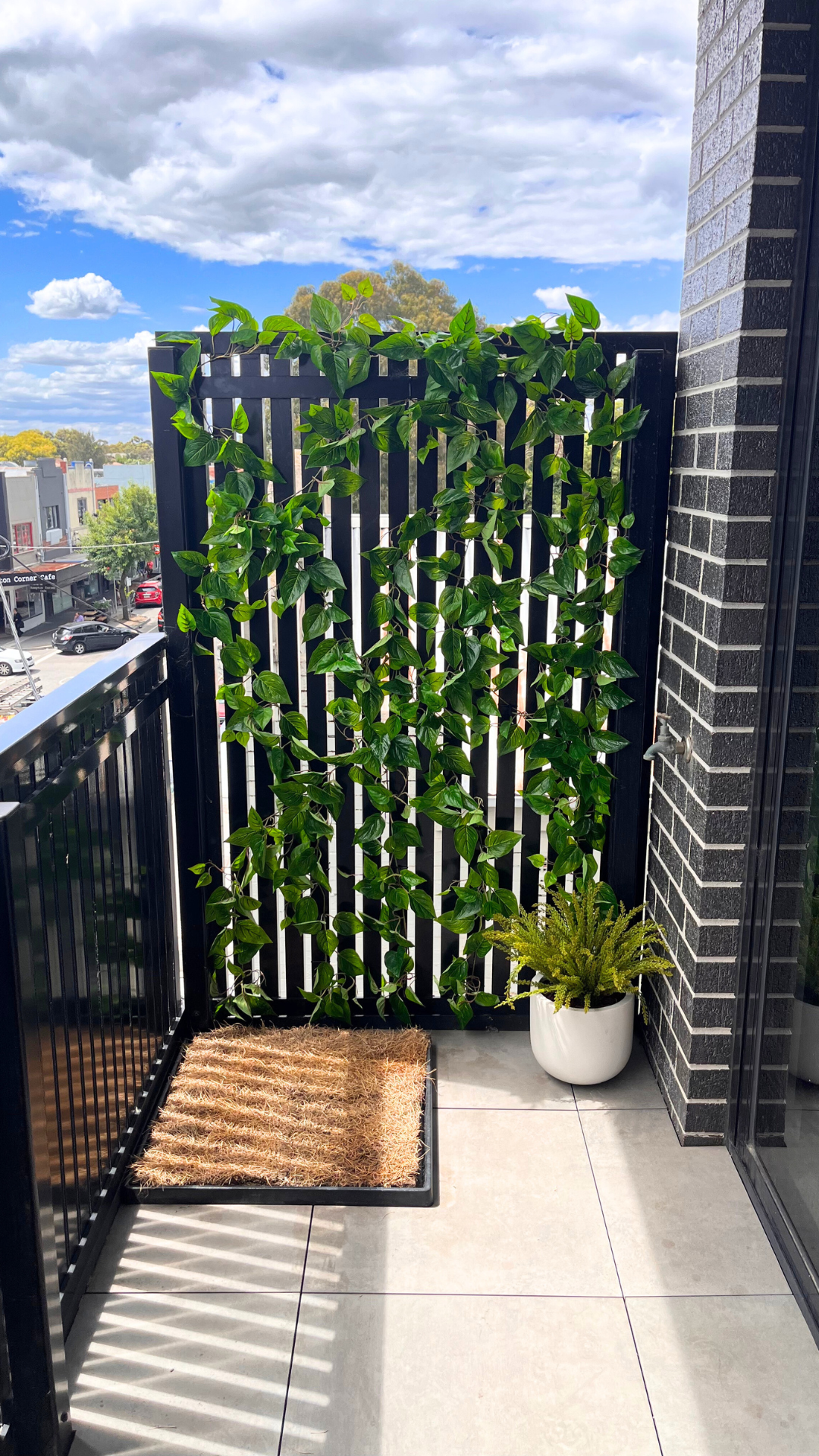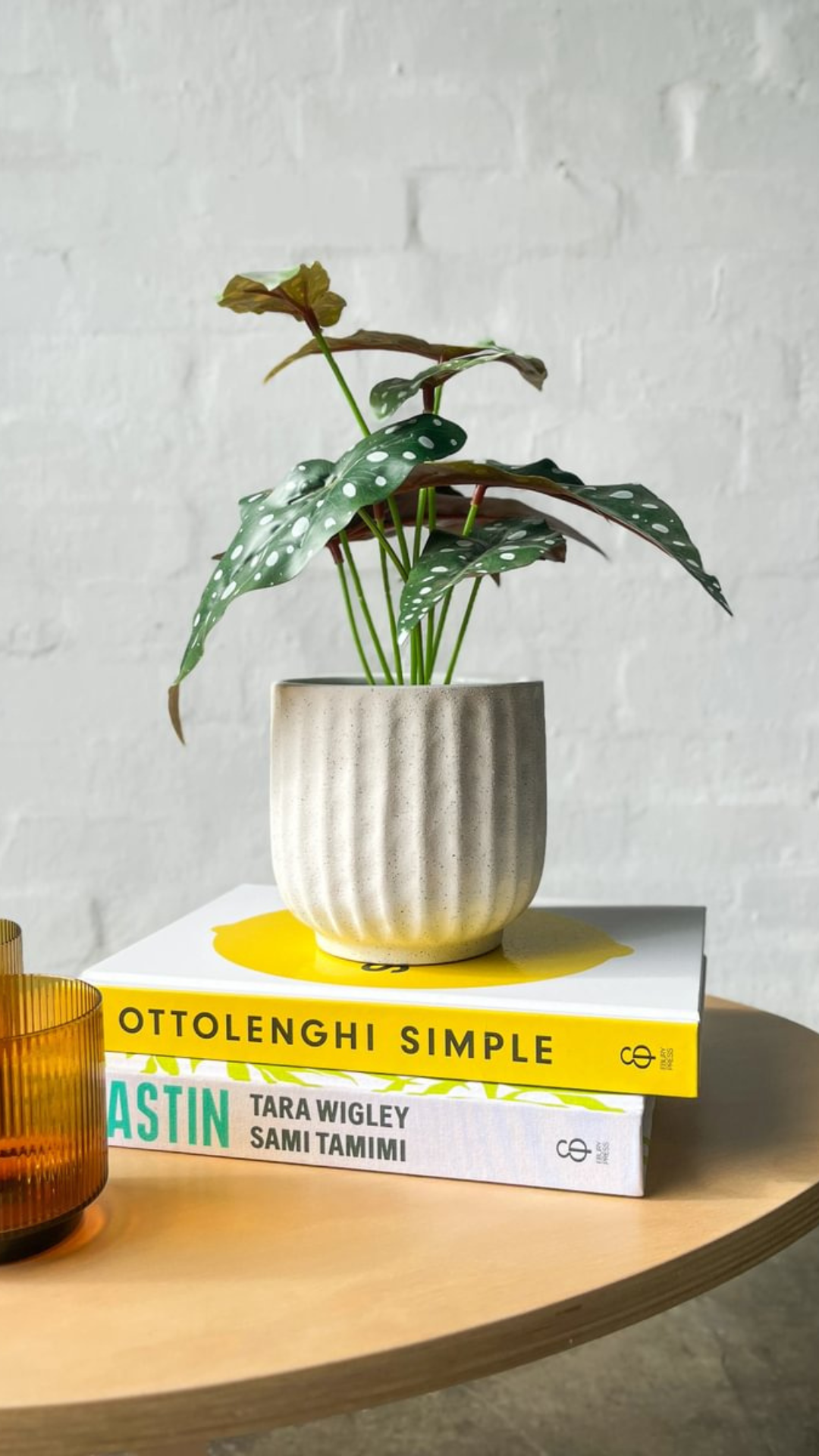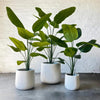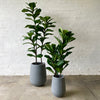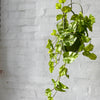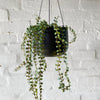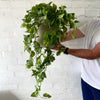We’ve put together five easy, cheap, and creative ways for hanging plants from the ceiling without drilling holes. Your lush plant paradise awaits!
Want to make your home way more charming without having to ask for your landlord’s permission? Just add plants.
However, if you’re already a plant parent, you’ll know that floor and shelf space runs out pretty quick. If you’re also a pet parent, you’ll know that the floor isn’t always an option at all. As you add more members to your leafy family, you’ll have to look for even more creative ways to display them. For lush rainforest vibes, may we suggest the ceiling?
Of course, the renter’s dilemma is the inability to add permanent fixtures to the home. But we’ve got several hacks for that! Whether you’re a renter or simply not that handy with a drill, read on to find out how to hang plants from the ceiling without drilling holes (or causing any other damage for that matter).
Hot tip: Many of the following suggestions involve keeping your ceiling plants as light as possible, as you won’t be installing a permanent hook via a drill. The Plants Project has a range of stylish lightweight pots and hanging planters ideal for your ceiling jungle.
Adhesive hooks
Easy and affordable, adhesive hooks are one of the most popular ways to hang plants from the ceiling without drilling. There are plenty of varieties out there, but if you’re new to DIY, ‘Command’ is a trusted brand and can be purchased at any major supermarket or hardware store.
You want to make sure that the hook is adjustable and can hang straight down from the ceiling. Many adhesive hooks are fixed for wall hanging and won’t work for ceiling plants. Also note how much weight the hooks can hold and try to buy the most heavy-duty ones, even if your plant is lighter. If you are hanging live plants (as opposed to artificial hanging plants) bear in mind that your plant will be heavier when you water it.
Before applying an adhesive hook to your ceiling, make sure you clean and dry the area thoroughly, removing all dust and dirt. Once the hook is installed, give it a little time to simmer and wait 24 hours before hanging anything. If you’re being extra cautious, you can even hang something very low stakes and unbreakable on the hook for a couple days before trusting it with your plant!
Tension rods for hanging plants
When IKEA shared an Instagram post showing this genius plant hack, the internet went wild. Typically used to hang curtains or clothes, tension rods have been perfectly reimagined for the purpose of hanging plants up high. If you’ve ever seen a tension rod in a door frame used for pullups, you’ll know that you can place a fair bit of weight on them, too.
A tension rod can be used in a small space, such as a skylight, window, or door frame, as well as a larger area, for example, going wall to wall. Or, if you take the IKEA example, you can use two tension rods going floor to ceiling, with a third rod laying across them for your plants.

Suction hooks and planters
Though it might sound surprising, there are heavy duty suction hooks out there that can carry quite a bit of weight (though we’d still recommend keeping your plants as light as possible for this option). There are even suction plant pots that come with the feature built right in.
However, there is a caveat. Suction hooks and planters hold most effectively on non-porous materials, such as tiles, glass, and metals. That’s not your average ceiling! But there is a workaround. If your ceiling doesn’t have the ideal surface, suction planters look great on skylights, as well as high windows.
As with adhesive hooks, ensure you clean the area thoroughly and make sure it’s free of dust and grime before affixing suction hooks.
Use a clamp to hang your plants
Just like the tension rod, the true purpose of a clamp is not really to be a hook for plants. But it can be done! G-clamps (sometimes called C-clamps, depending where you’re from) can be fixed to spaces such as archways, stub walls, door frames where the door is not in use, rafters, or any small, sticking out part of the home you can affix it to safely.
One you’ve put the clamp in place (screw it on so it’s firm, but not firm enough to make a hole), you’ll be able to hang your plant on the portion of the clamp that is remaining at the end. Remember to measure the area before you purchase your clamp, as they come in a variety of sizes.

Magnetic hooks
Magnetic hooks are the ideal candidate for hanging plants from the ceiling if you have the right surface. They're stronger than adhesive or suction hooks, however, not all ceilings will be attractive to them! The best place for magnetic ceiling hooks are air ducts and air vents, metal beams, and dropped ceilings with metal grids.
If you live in any sort of industrial or warehouse-style building, you may be lucky enough to have exposed metal beams. If your building has metal beams, but they’re not exposed, you’ll have to guide the magnet around to find them.
Dropped ceilings often use metal grids to piece paneling together. If this is the case in your home, you’ll have no trouble fixing a magnetic hook to it.
5 extra ideas for hanging plants without drilling holes
These ideas aren’t going to help you hang plants on the ceiling, but they’ll still get them pretty high!
- Over door hooks: These are cheap, easy, and can also be used on surfaces other than doors, such as exposed pipes and ledges.
- Hooks in furniture: You might not be able to drill hooks into your walls or ceiling, but you can definitely drill them into your own furniture. Sturdy wooden bookshelves and cupboards are great for this, just make sure you don’t throw it off balance.
- Coat stands: Perfect for anywhere in the house that could use a little jazzing up. A coat stand provides a heap of instant, damage-free hooks.
- Ladders: Old ladders add a lovely touch inside the home. Placing plants on the rungs can make them look even better!
- Curtain rods: Most curtain rods have a little left over where you can easily hang a plant. Use both ends to keep the balance and only use this trick if the rod is sturdy enough.
Ready to get started? We’re here to help with all of your plant and pot needs!
- Artificial hanging plants (Australia-wide delivery)
- Live plants (Melbourne only)
- Hanging planters
- Lightweight pots


